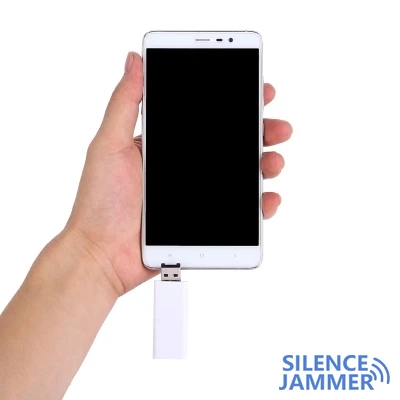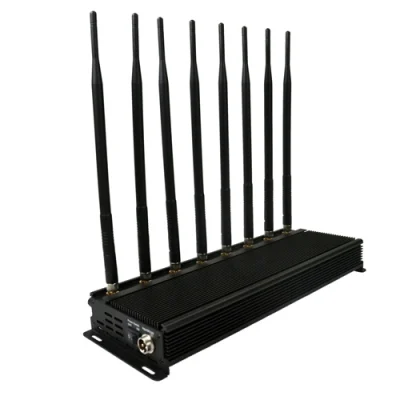A signal jammer is a device used to block wireless communications. It is often used to protect privacy, ensure security, and prevent illegal communications. Although the unauthorized use of signal jammers is illegal in many countries, within legal limits, it is sometimes necessary to ensure that these devices are functioning properly. So, how do you tell if your signal jammer is working properly? This article will discuss in detail the basic principles, detection methods, precautions, etc. to help you effectively verify the performance of the signal jammer.

Basic principles of signal jammers
Signal jammers emit interference signals at the same frequency as the target wireless signal to cover and suppress the target signal, making it impossible to transmit normally. The main steps include:
- Identify the target frequency band: Determine the signal frequency band that needs to be interfered with, such as mobile phone signals, Wi-Fi signals, GPS signals, etc.
- Emit interference signals: emit high-intensity interference signals within the target frequency band.
- Block communications: By covering the target signal so that it cannot be received or sent.
Detection method to determine whether the signal jammer is working properly
1. Test using the target device
This is the most direct method to determine the working status of the jammer by observing the signal condition of the target device (such as mobile phone, Wi-Fi router, GPS device, etc.).
Prepare your device: Make sure your target device (such as a cell phone or Wi-Fi device) has a good signal without jammers.
Enable jammer: Activate the signal jammer.
Observe changes: Observe the signal condition of the target device. If the jammer is working properly, the signal from the target device should be significantly weakened or disappear completely.
Cell phone signal: After turning on the jammer, the cell phone signal bar will be weak or no signal, and you will not be able to make or receive calls.
Wi-Fi signal: The connection speed of the Wi-Fi device slows down or is completely disconnected, and the Internet cannot access the Internet normally.
GPS signal: The GPS device cannot locate or the positioning accuracy is greatly reduced.
2.Use a signal strength tester
The signal strength tester can accurately measure the wireless signal strength in the environment and is an effective tool to judge the working status of the signal jammer.
Measure the initial signal strength: When the jammer is not turned on, use a signal strength tester to measure the signal strength of the target frequency band.
Enable jammer: Activate the signal jammer.
Re-measure signal strength: Use the signal strength tester again to measure the signal strength of the target frequency band.
Comparative data: If the signal jammer is working properly, the signal strength in the target frequency band will be significantly reduced.
3. Use professional testing equipment
Professional signal analysis instruments can accurately analyze the spectrum and display the interference signals emitted by the jammer. These devices are typically used in professional settings, but can also be used for personal use in certain situations.
- Prepare the signal analyzer: Set up the signal analyzer and adjust it to the target frequency band.
- Measure environmental signals: When the jammer is not turned on, measure and record the signal spectrum in the environment.
- Enable jammer: Activate the signal jammer.
- Observe spectrum changes: The signal analyzer should show the interfering signal emitted by the jammer. If working properly, the jamming signal should cover or interfere with the normal signal in the target frequency band.
Things to note when using a signal jammer
1. Legality
In most countries and regions, the use of signal jammers requires authorization or permission. Unauthorized use of signal jammers may violate laws and regulations and bring legal risks. Therefore, you should understand and comply with local legal requirements before use.
2. Environmental impact
When the signal jammer is working, it will affect wireless communications in the surrounding environment. When using it, you should consider the possible interference to other legal communication equipment and avoid using it in public places or emergency communication situations.
3. Interference range
The effective range of a signal jammer depends on its power and target frequency band. Generally speaking, the greater the power, the wider the interference range. However, it should be noted that too high power may cause the interference range to be too large, affecting more devices.
4. Equipment maintenance
Regularly inspect and maintain signal jammers to ensure they are functioning properly. This includes checking the power supply, cable connections, and the condition of the device itself to avoid poor interference due to device failure.
There are several ways to determine whether a signal jammer is working properly, including directly testing the target device, using a signal strength tester, and a professional signal analyzer. No matter which method is used, attention should be paid to the impact of legality and use environment to ensure testing and use within a reasonable range. Through these methods, you can effectively judge the working status of the signal jammer and ensure that it can perform the expected effect when needed.



